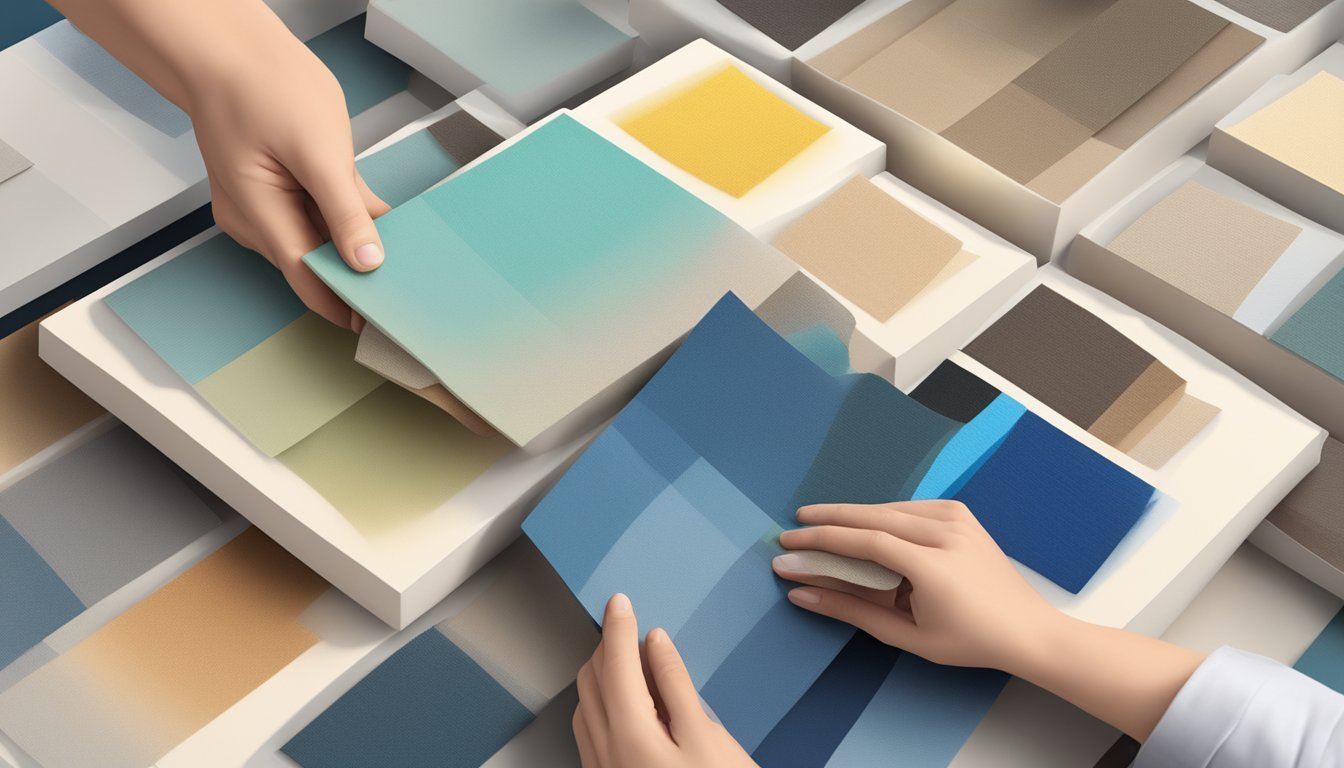Choosing the right canvas for your art project can make a significant difference in how your work turns out.
With so many options available, it can feel overwhelming at times. Understanding some key factors in selecting your canvas, you can ensure your creative vision is brought to life effectively.

Whether you’re a beginner or a seasoned artist, the type of canvas you use plays a crucial role in your artistic process.
From size and texture to material and priming, these elements can influence not only the application of your medium but also the durability of your artwork. The right choices can enhance both your painting experience and the final result.
1) Consider the Weight of the Canvas
The weight is an important factor when choosing a canvas.
Canvas weight is usually measured in ounces per square yard.
Heavier canvases tend to be more durable and can handle more paint.
If you’re working on a large piece, consider using a heavy-weight canvas, generally between 10 to 12 ounces.
This type is great for heavy applications of paint and blending techniques.
For smaller projects or lighter applications, medium-weight canvases can suffice.
These typically weigh around seven to eight ounces and offer versatility without being overly heavy.
Think about how you plan to use the canvas.
Heavier options can be more robust but might add extra weight if you’re moving your work around.
Choose the canvas weight that best suits your painting style and project needs.
The right weight can enhance the final look of your masterpiece.
2) Check Canvas Texture for Versatility
When choosing a canvas, the texture is key for versatility in your work.
Different textures can alter how paint interacts with the surface.
Smooth canvases are perfect for fine details and precision.
If you enjoy intricate designs or delicate brushwork, this texture will serve you well.
Medium-grain canvases offer a balance between detail and textural interest.
They can handle various techniques, making them a good choice for mixed media or varied styles.
Rough canvases provide depth and character to your paintings.
They are ideal for expressive styles where texture adds to the visual narrative.
Consider how your chosen texture complements your painting style.
Think about the effects you want to achieve.
Choosing the right canvas texture enhances your ability to express your artistic vision effectively.
3) Look for Primed Canvas Options
When selecting a canvas, consider choosing pre-primed options.
These canvases already have a layer of gesso applied, giving you a smoother surface for your artwork.
Pre-primed canvases save you time and effort since they’re ready to use.
You won’t need to worry about applying the primer yourself, which can be a hassle.
Check the quality of the primed canvas.
Make sure it blocks light well; if you see gaps when you hold it up to the light, it might not be the best choice.
A quality primed canvas provides a solid foundation for various painting techniques.
If you’re feeling adventurous, you can also opt for unprimed canvases.
They do require an extra step of priming, but you can customize the texture and feel by applying your own gesso.
Consider what materials you’ll use.
Some paints, like acrylics, work really well on primed canvases, while others might benefit from the unique texture of unprimed ones.
Choose what fits best for your artistic vision.
4) Explore Different Canvas Sizes
When choosing a canvas, size matters.
Think about what you want to create and where it will hang.
Small canvases, like 4 x 6 inches, are great for quick sketches or gifts.
They’re perfect for greeting cards and small art pieces.
Medium sizes, such as 8 x 10 and 12 x 16 inches, give you more space to work.
These are popular for portraits or landscapes.
They allow for more detail without overwhelming you.
Large canvases, like 24 x 36 inches, can make a bold statement.
These are ideal for showcasing dramatic scenes or vibrant abstract art.
Just ensure you have enough wall space.
Consider how your canvas will fit in the room.
A well-chosen size can enhance the space and draw attention.
Experiment and find what size feels right for your artistic vision.
5) Assess Canvas Material Quality

When choosing a canvas, the material quality can make a big difference in your artwork.
Cotton and linen are the most common materials you’ll encounter.
Cotton canvas is great for beginners.
It’s affordable, accessible, and works well for a variety of techniques.
Linen canvas tends to be pricier, but it’s more durable and has a luxurious feel.
It can hold more detail and works best for serious projects where longevity matters.
Pay attention to the weight of the canvas.
A heavier canvas typically indicates better quality and durability.
Look for options that are at least 10 oz for sturdier support.
Also, consider whether the canvas is primed.
A primed canvas is prepped for painting, saving you time and ensuring better paint adhesion.
If it’s unprimed, you might need to apply a gesso layer first.
Lastly, inspect the texture.
Smoother canvases are ideal for detailed work, while rougher textures can add dimension to your paintings.
Understanding Canvas Types

When selecting a canvas, it’s essential to grasp the differences in material and format.
The choice between cotton and linen, as well as the type of canvas preparation, can significantly impact your artwork’s final appearance and durability.
Cotton vs. Linen
Cotton canvas is commonly chosen for its affordability and versatility.
It has a natural texture that provides a good grip for paint, making it suitable for various techniques.
You can find cotton in numerous weights and ready-made options.
Linen canvas, while pricier, offers superior durability and a fine texture.
It resists stretching over time and is less prone to mold and mildew.
Artists often prefer linen for high-quality work due to its longevity and resilience.
If you’re looking for a canvas that stands the test of time, linen might be the better option for you.
Pre-Stretched Vs. Canvas Rolls
Pre-stretched canvas is ready to paint on right out of the packaging.
This convenience saves you time and effort, especially for those new to painting.
It’s available in various sizes and is primed, allowing for immediate use.
On the other hand, canvas rolls provide flexibility.
You can cut and stretch them to your desired dimensions, enabling customization for larger or unique projects.
While these require more setup, they can be more cost-effective for serious artists or those with specific size needs.
Your choice will depend on how much preparation you’re willing to do before starting your artwork.
Importance of Canvas Weight

Choosing the right canvas weight is crucial for how your artwork will look and perform over time.
The weight influences not only the application of paint but also the durability of your finished piece.
How Weight Affects Your Art
Canvas weight plays a significant role in your painting process.
Lighter canvases, generally weighing around 5 to 8 ounces, are more suitable for detail work and layering.
They allow for fine brushwork but may sag if too much paint is applied.
On the other hand, heavier canvases, typically 10 ounces or more, hold up better to thick applications and heavy blending.
They provide a solid base for large paintings and can withstand the weight of multiple layers of paint.
Keep in mind that the surface texture also changes with weight, which can affect how your brush interacts with the canvas.
Choosing The Right Weight for Your Medium
Selecting a canvas weight that aligns with your medium is essential.
Acrylics and oils tend to perform best on heavier canvases.
They require a sturdier surface to support their thickness and drying techniques.
If you’re working with watercolors, a lighter canvas may suffice, allowing for delicate washes and detail.
Consider also the type of project.
For gallery pieces that will be displayed prominently, opt for a heavier weight.
For sketching or practice, lighter options can be more economical and practical.
Always match the canvas to your artistic intent to ensure the best results.


